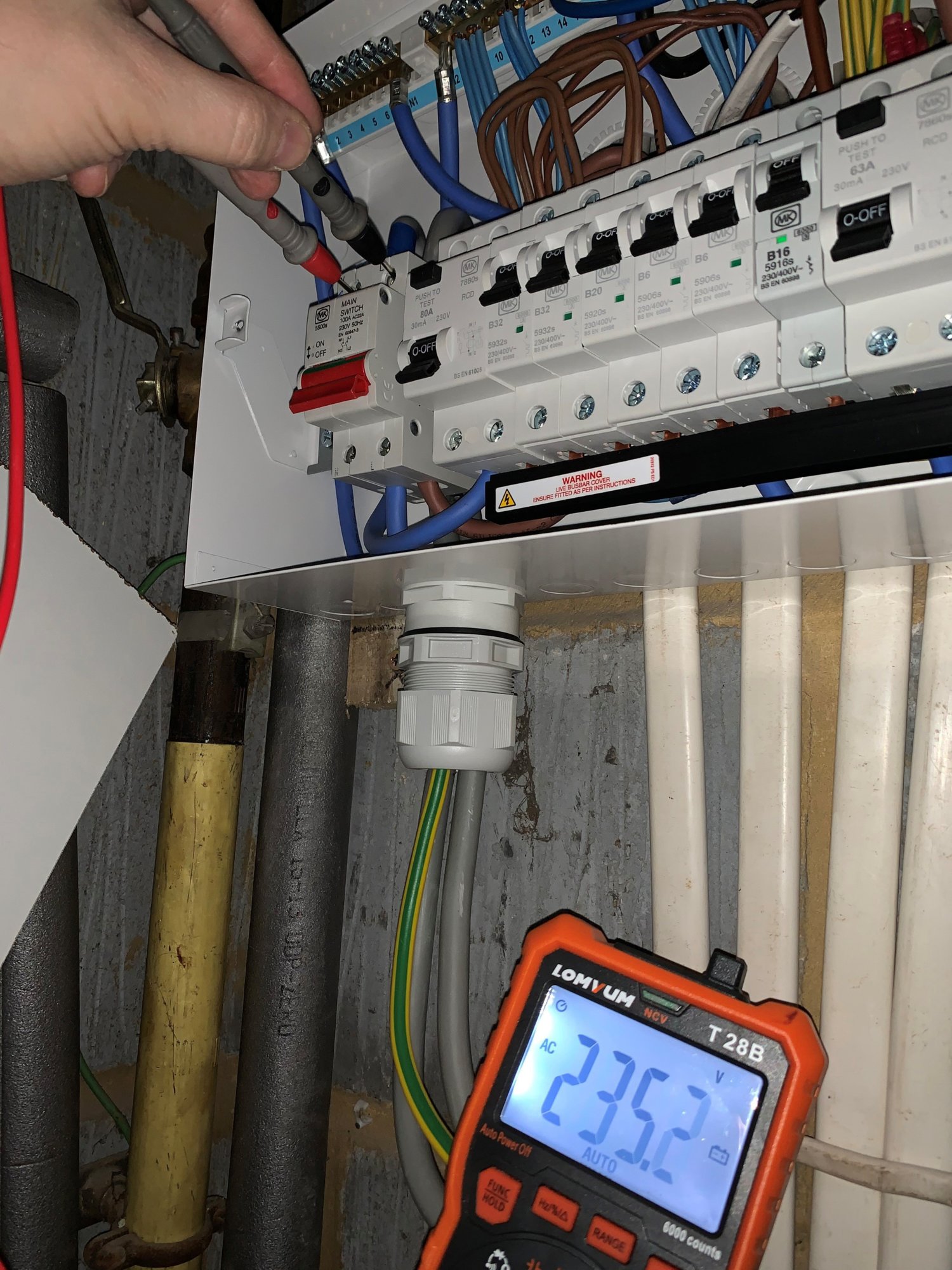- Joined
- 3 Jan 2020
- Messages
- 4
- Reaction score
- 0
- Country

Hi
In my (new) consumer unit, there are 3V across the Neutral bar and the earth bar, when the mains is off. There is also 53V across the mains switch from L to N when it's off and 44V between the line supply and line out. Is this normal when the mains switch is off? Isn't N and Earth connected together at some point therefore should be 0 volts difference?
Could this explain why my LED bulbs never switch off but only go dim when switched off via a wall switch?
See pics for actual readings - does anyone know what the readings should be in a good installation?
Thanks in advance...
In my (new) consumer unit, there are 3V across the Neutral bar and the earth bar, when the mains is off. There is also 53V across the mains switch from L to N when it's off and 44V between the line supply and line out. Is this normal when the mains switch is off? Isn't N and Earth connected together at some point therefore should be 0 volts difference?
Could this explain why my LED bulbs never switch off but only go dim when switched off via a wall switch?
See pics for actual readings - does anyone know what the readings should be in a good installation?
Thanks in advance...






